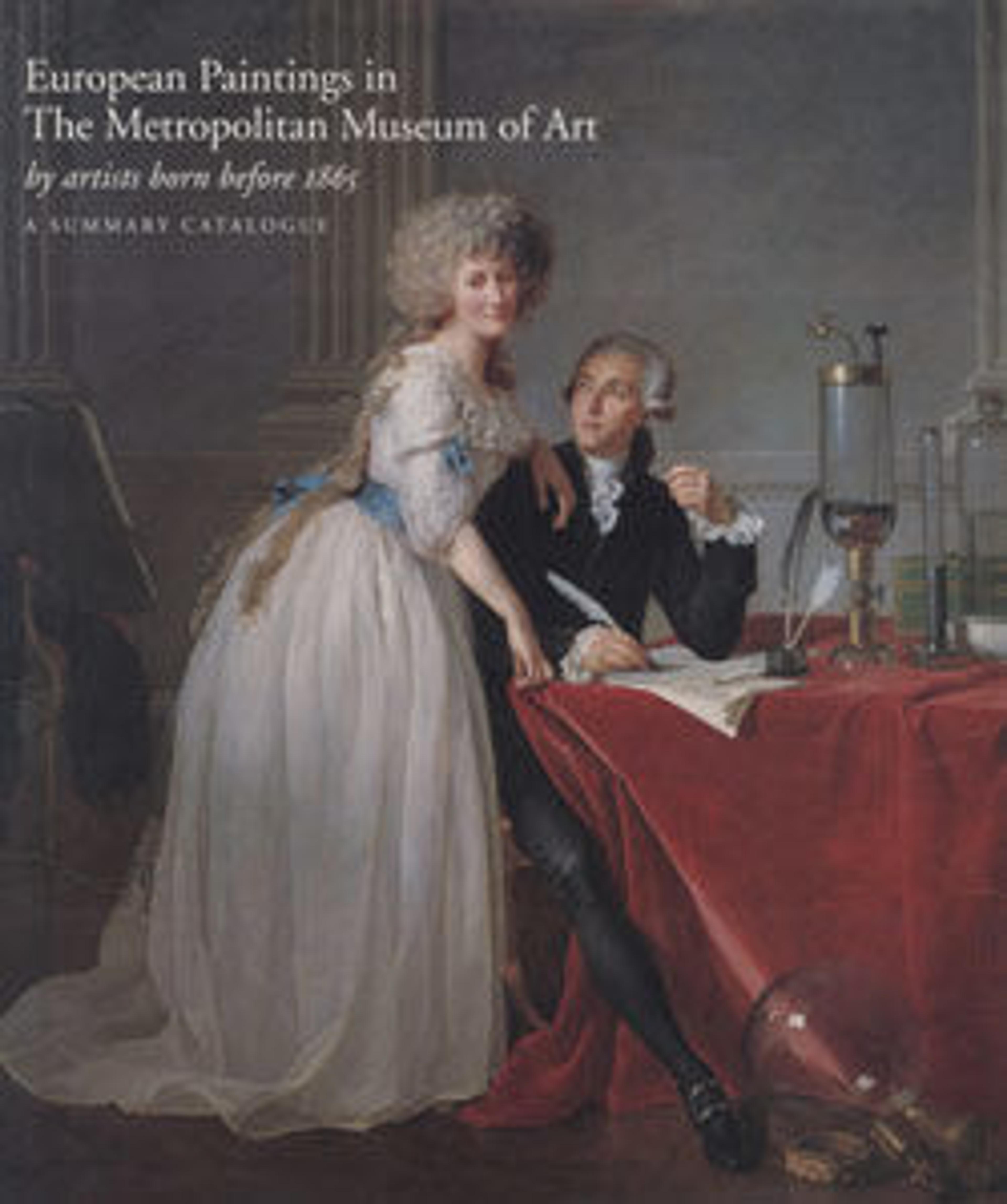The Adoration of the Magi
Dressed in sumptuous gold embroidered robes, three Magi and two angels, shown in profile at the right, adore the Virgin and Child, who are seated in the doorway of a palace. They are accompanied by three figures wearing pastel robes and turbans, an early depiction of Africans at the scene of the Adoration. The trio may represent the Ethiopian ambassadors who journeyed to Rome and Avignon in 1306, and their mythical ruler Prester John, considered to be a descendent of the magi. According to pictorial tradition, their smaller scale indicates they occupy the earthly realm. Africans often appear in later Adoration images as one of the magi, symbolizing the spread of Christianity, or as enslaved servants, reflecting their cultural "otherness" and conditions of oppression in Europe.
The painting was originally part of a folding altarpiece comprised of multiple panels, indicated by hinge marks on both the left and right sides of the frame, which is original. The ensemble included scenes of the Annunciation and the Nativity (Musée Granet, Aix-en-Provence) and at least one other lost panel, which may have depicted the Presentation in the Temple or the Flight into Egypt. The backs of the two works in Aix-en-Provence at one time bore the coats of arms of the Anjou and Aragon dynasties, while an unidentified coat of arms that once existed on the reverse of the Lehman panel has since been lost. The altarpiece may have been donated by Robert of Anjou (King of Naples, r. 1309-43) and Queen Sancha to the convent of the Poor Clares in Aix-en-Provence. Previously attributed to an anonymous Sienese artist working in Avignon, the altarpiece has more recently been ascribed to a Neapolitan artist influenced by Giotto, a pivotal figure in Western art, whose activity in Naples from 1328 to 1332 had a significant impact on local artists.
The painting was originally part of a folding altarpiece comprised of multiple panels, indicated by hinge marks on both the left and right sides of the frame, which is original. The ensemble included scenes of the Annunciation and the Nativity (Musée Granet, Aix-en-Provence) and at least one other lost panel, which may have depicted the Presentation in the Temple or the Flight into Egypt. The backs of the two works in Aix-en-Provence at one time bore the coats of arms of the Anjou and Aragon dynasties, while an unidentified coat of arms that once existed on the reverse of the Lehman panel has since been lost. The altarpiece may have been donated by Robert of Anjou (King of Naples, r. 1309-43) and Queen Sancha to the convent of the Poor Clares in Aix-en-Provence. Previously attributed to an anonymous Sienese artist working in Avignon, the altarpiece has more recently been ascribed to a Neapolitan artist influenced by Giotto, a pivotal figure in Western art, whose activity in Naples from 1328 to 1332 had a significant impact on local artists.
Artwork Details
- Title: The Adoration of the Magi
- Artist: Italian, Neapolitan Follower of Giotto (active second third of the 14th century)
- Date: ca. 1340–43
- Culture: Italian, Naples
- Medium: Tempera on wood, gold ground
- Dimensions: Overall, with engaged frame, 26 1/8 x 18 3/8 in. (66.4 x 46.7 cm); painted surface, including tooled border, 21 3/8 x 15 in. (54.3 x 38.1 cm)
- Classification: Paintings
- Credit Line: Robert Lehman Collection, 1975
- Object Number: 1975.1.9
- Curatorial Department: The Robert Lehman Collection
More Artwork
Research Resources
The Met provides unparalleled resources for research and welcomes an international community of students and scholars. The Met's Open Access API is where creators and researchers can connect to the The Met collection. Open Access data and public domain images are available for unrestricted commercial and noncommercial use without permission or fee.
To request images under copyright and other restrictions, please use this Image Request form.
Feedback
We continue to research and examine historical and cultural context for objects in The Met collection. If you have comments or questions about this object record, please contact us using the form below. The Museum looks forward to receiving your comments.
